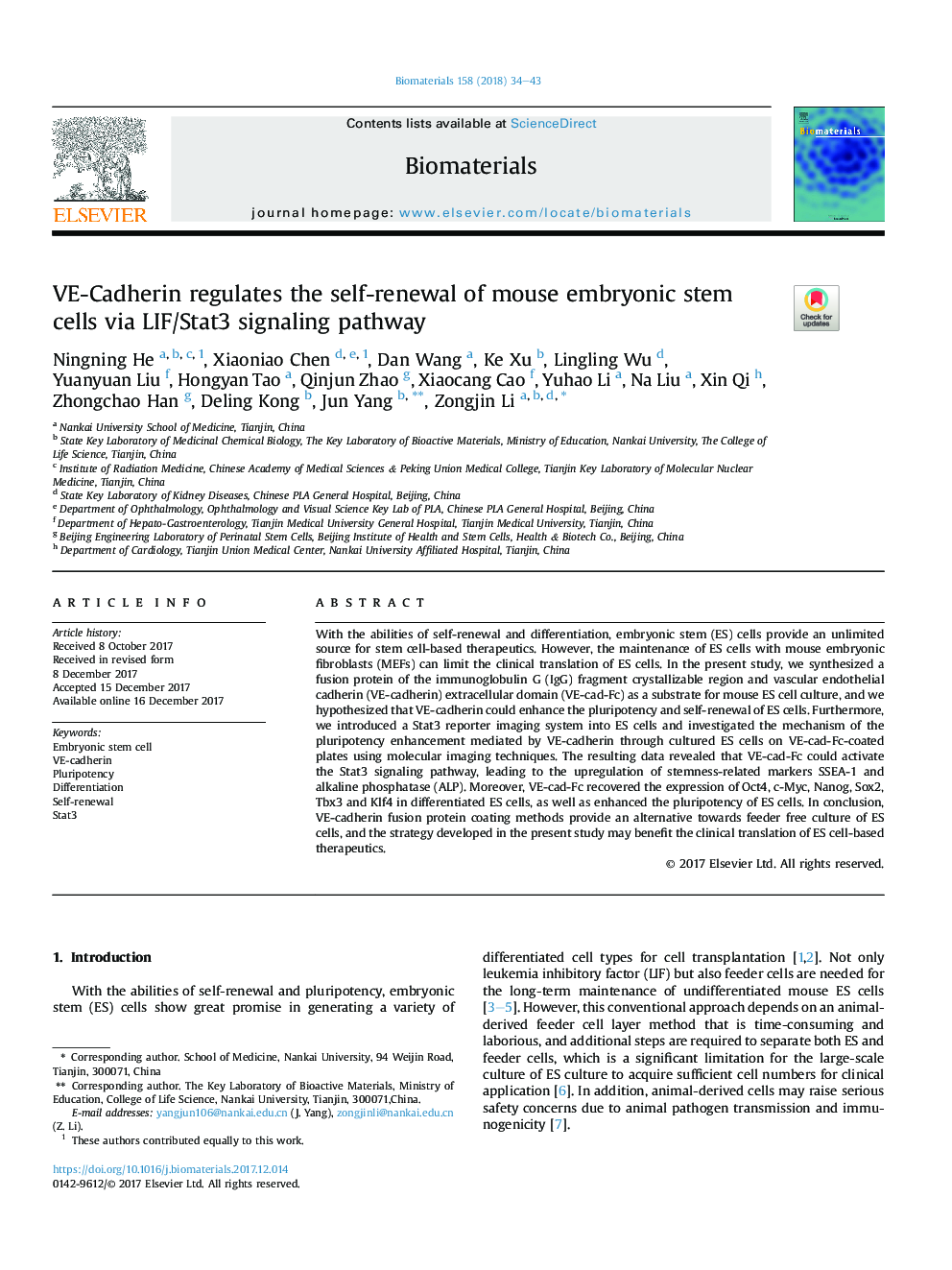| Article ID | Journal | Published Year | Pages | File Type |
|---|---|---|---|---|
| 6484677 | Biomaterials | 2018 | 10 Pages |
Abstract
With the abilities of self-renewal and differentiation, embryonic stem (ES) cells provide an unlimited source for stem cell-based therapeutics. However, the maintenance of ES cells with mouse embryonic fibroblasts (MEFs) can limit the clinical translation of ES cells. In the present study, we synthesized a fusion protein of the immunoglobulin G (IgG) fragment crystallizable region and vascular endothelial cadherin (VE-cadherin) extracellular domain (VE-cad-Fc) as a substrate for mouse ES cell culture, and we hypothesized that VE-cadherin could enhance the pluripotency and self-renewal of ES cells. Furthermore, we introduced a Stat3 reporter imaging system into ES cells and investigated the mechanism of the pluripotency enhancement mediated by VE-cadherin through cultured ES cells on VE-cad-Fc-coated plates using molecular imaging techniques. The resulting data revealed that VE-cad-Fc could activate the Stat3 signaling pathway, leading to the upregulation of stemness-related markers SSEA-1 and alkaline phosphatase (ALP). Moreover, VE-cad-Fc recovered the expression of Oct4, c-Myc, Nanog, Sox2, Tbx3 and Klf4 in differentiated ES cells, as well as enhanced the pluripotency of ES cells. In conclusion, VE-cadherin fusion protein coating methods provide an alternative towards feeder free culture of ES cells, and the strategy developed in the present study may benefit the clinical translation of ES cell-based therapeutics.
Related Topics
Physical Sciences and Engineering
Chemical Engineering
Bioengineering
Authors
Ningning He, Xiaoniao Chen, Dan Wang, Ke Xu, Lingling Wu, Yuanyuan Liu, Hongyan Tao, Qinjun Zhao, Xiaocang Cao, Yuhao Li, Na Liu, Xin Qi, Zhongchao Han, Deling Kong, Jun Yang, Zongjin Li,
